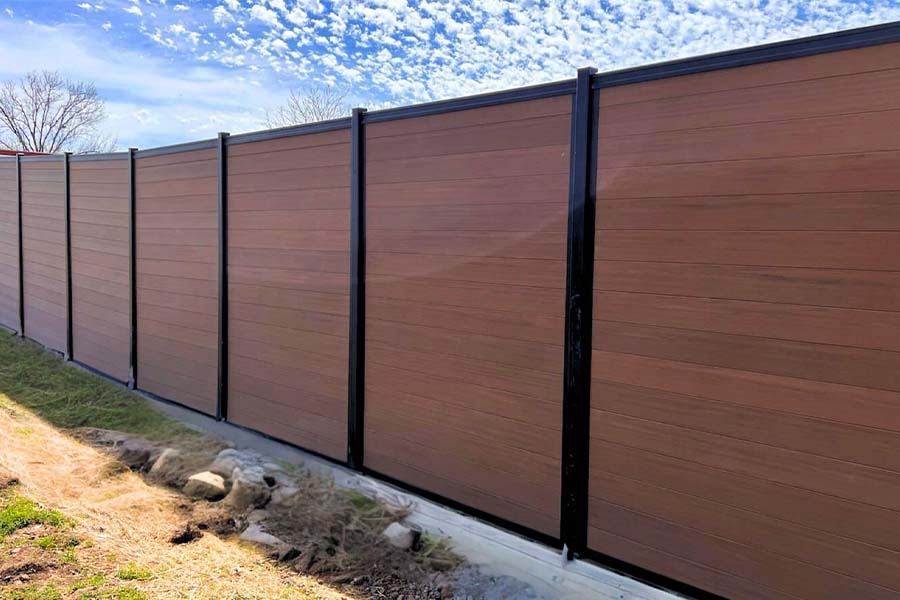All Categories
Featured

When thinking about setting up a fence on your building, one of the most important actions is to understand whether you need a permit. The particular authorizations required can vary depending on your place, the type of fencing you prepare to install, and the elevation or positioning of the fencing.
Why You Need a Permit for a Fence Installation. The license process helps neighborhood authorities verify that your fencing does not conflict with web traffic presence, respect your residential property lines, or go against height restrictions. Mounting a fence without a license can result in penalties, removal of the fence, or hold-ups in building, so it's necessary to inspect whether an authorization is called for prior to beginning your task.
Sorts Of Licenses You Might Require. There are a couple of typical types of licenses you could need for a fence installation:
Building Authorization. A building license is the most common authorization needed for fence installments. This license makes certain that the fencing fulfills security criteria and is constructed according to local building codes. A structure permit is normally needed if the fence exceeds a particular elevation (commonly 6 feet), is constructed from certain materials, or is located near a public sidewalk or roadway.
Zoning Authorization. A zoning permit might be needed to verify that your fencing follows regional zoning legislations. Zoning regulations can dictate where a fencing can be put on your building, exactly how high it can be, and whether it is allowed specific locations (such as along residential property lines or in front yards) Some districts have laws limiting the height of fences in the front yard to make sure presence for vehicle drivers and pedestrians.

Trouble Permit. You might need a problem permit if you are constructing a fence near your property line or close to a road. A trouble describes the range a framework, consisting of fencings, must be from the residential or commercial property line. Obstacle regulations vary by location, and making sure that your fence is put correctly can avoid conflicts with neighbors and avoid offenses.
Property Owner Organization (HOA) Authorization. You may require authorization from them in addition to neighborhood licenses if you live in a community controlled by a Homeowner's Association (HOA) HOA regulations often cover the kind of products, elevation, style, and color of fences. Also if your local government does not need a license, your HOA might still have details guidelines that need to be adhered to.
Exactly How to Obtain a Fence Authorization. To look for a fence permit, you'll need to contact your neighborhood building department or preparation office. The application process commonly includes filling in a form, paying a charge, and sending a site strategy of your residential or commercial property that reveals the proposed area of the fence. You might additionally need to include information regarding the products, elevation, and layout of the fencing.
In many cases, a neighborhood authorities might need to examine your residential or commercial property before authorizing the permit. Once the license is approved, you will be accredited to continue with your fence installation.
When Is an Authorization Not Required? In certain circumstances, a permit may not be required. These situations can include:
Low Elevation Fences: In several locations, fencings that are listed below a specific elevation (often 3 to 4 feet) might not require a license, especially if they are positioned in the backyard or other non-visible areas.
Fencing Substitute: If you're changing an existing fence with the exact same height and product, some areas might not call for a new license.
Non-Obtrusive Fences: Short-lived or ornamental fencings, such as those used for horticulture or landscape design purposes, might not call for permits as long as they are reduced and not permanent.
Nonetheless, it's crucial to get in touch with your local zoning office or building division, as regulations can vary by jurisdiction.
Repercussions of Not Acquiring an Authorization. Failing to acquire the needed authorizations can lead to significant repercussions. These consist of fines, required removal of the fence, or also delays in construction. Additionally, if your fence does not fulfill regional policies, you could encounter lawful problems with next-door neighbors or local authorities.

Verdict. When installing a fencing, it's essential to investigate the permit needs in your area. By guaranteeing that you follow regional laws and acquire the necessary licenses, you can avoid expensive errors and make certain that your fencing is lawfully certified. Get in touch with your local structure department, HOA, and zoning workplace to establish what permits are needed for your particular fence task. This action is crucial to protect both your financial investment and your property's worth.
Latest Posts
KingPins
Published Nov 27, 24
1 min read
Planning Your Dream Wedding During Off-Peak Times
Published Nov 27, 24
1 min read
How to Plan an Eco-Friendly Event
Published Nov 27, 24
3 min read